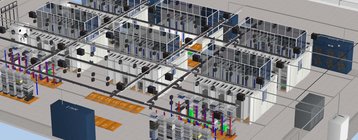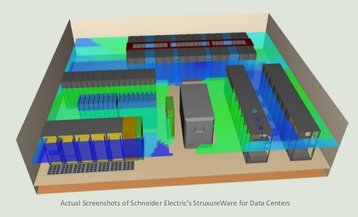There is no question that data center infrastructure management has been recognized as a valuable piece of the data center puzzle. However the fact that DCIM encompasses everything from point solutions to full-blown management consoles means that there are many different ways to approach DCIM, as well as methodologies to integrate it into larger hardware/software management and ITSM solutions.
Information is key to successful IT management and that is exactly what DCIM solutions deliver. With current generation technologies there is a significant amount of instrumentation available that can be utilized to provide detailed information about your data center infrastructure. But it is easy to get lost in the minutia; making use of all the available data is a noble goal, but realistically, determining which sources deliver information that can be acted upon in a practical fashion can be difficult. Making that information usable and relating it to other data derived from your IT infrastructure is where the real value lies.
Tools of the trade
One of the biggest problems when dealing with the wealth of DCIM solutions is trying to figure out how to integrate them with your existing IT management tools, especially since DCIM tools often cross the divide between traditional IT and facilities management.
DCIM vendors have started to address this issue by providing entire suites of tools and services, while some are offering direct connections to major IT management platforms from vendors such as HP and BMC. The tools don’t address organizational issues related to the division of IT and facilities responsibilities, but they do allow IT to get a real world view of critical infrastructure issues that can potentially impact data center performance.
With the historical separation between IT and facilities, IT departments have often been completely insulated from facilities issues, regardless of their impact on IT. With growing operational costs, this has become an impractical way to run a data center, and tighter integration between facilities and IT means increased value in DCIM, ITSM and traditional IT management tools.
Smaller DCIM vendors are disadvantaged by the lack of integration with larger management systems and often seem blinded by the abilities of their own point solutions. When asked how they plan to integrate with other tools or large-scale management systems, the responses most often look to place the responsibility on the customer. Offering just SNMP information doesn’t cut it anymore, and the very common response “we have an open API” is equivalent to saying “you need to write code to integrate our product with what you use, or pay us to do that for you.” Neither answer builds confidence in the potential user.
To a large extent, this is why the technologies of DCIM and IT service management are converging. Once users got their hands on DCIM tools they realized that the data they delivered would be invaluable in better refining their ITSM processes and procedures. Ad hoc and makeshift integration between the two technologies demonstrated the value of this approach. And with their customers demanding a tighter integration between tools, vendors are responding all the way up the process chain.
Hardware vendors are actively working with DCIM vendors to provide the hooks necessary to deliver information about their products. DCIM vendors are taking that data, organizing it, and feeding it to integrated ITSM solutions. The ITSM solutions can then be used to better analyze service delivery and determine the most effective ways to deploy, configure, and mage the IT load within the data center.
To skin a cat
Different technology vendors have taken different approaches to delivering integrated DCIM/ITSM solutions to their customers. CA Technologies, who got started in the DCIM business in 2012 with CA Data Center Infrastructure Management product, has been integrating it and other products into its full blown management tool, CA Unified Infrastructure Management.
Rather than releasing a single package, CA has approached it as a process; slowly integrating DCIM tools into its primary product, allowing existing customers of its Unified Management tools to add not only CA DCIM but a range of third-party products as well. CA has also enabled customers who are using third-party hosting services that deploy CA DCIM to receive the data from that host through their own CA management tools.
This approach gives customers a number of choices to make along the way, and allows for a staged implementation of the end-to-end solution. By not requiring the use of CA products at every level, the company has enabled users of the CA Unified Infrastructure Management to maximize their existing investment in management and operational software tools.
Schneider Electric, which produces a suite of datacenter management tools under the name StruxureWare for Data Centers, took the view that it needed to provide its tools with a better look further up the stack, and into VMs and applications running on the hardware that their DCIM products could already see. To this end it worked with HP’s Composable Infrastructure Partners Program.
Schneider’s integration with HP OneView Advanced means that the automatic asset identification and analysis data that OneView acquires when a new device is added to the network is passed down to the StruxureWare software. This means customers can see information derived from both products; the operational status of the server hardware in situ with related data center information, giving them a more detailed look into, and control of, their data center environment.
A different approach was taken by CommScope, which chose to partner with HP’s Converged Management Consulting Services. In this environment, HP uses the CommScope iTRACS DCIM solution to deliver those services to customers looking to build DCIM into their HP infrastructure. With the consulting business approach, HP customers are provided with what the team thinks are the most appropriate solutions for the project, based on the project needs and the tools available through HP.
Nlyte software has taken the most aggressive approach to integrating DCIM with ITSM. On its own, the company has developed a connector framework and now offers direct integration of its DCIM software with the three most common ITSM offerings. It has productized three editions of its own solution into Nlyte for HP ITSM, Nlyte for BMC ITSM, and Nlyte for ServiceNow ITSM. It has also developed framework infrastructure to allow rapid integration with any ITSM platform currently on the market. Nlyte claims that the process can be completed in days, rather than more common month’s long projects to build this type of integration.
Regardless of the approach taken, it is clear that DCIM and ITSM are on convergent paths. Eventually customers will be able to deploy end-to-end solutions that combine the features of both technical approaches. It is most likely that future products will be integrated modular tools rather than large, monolithic applications, but the end result will be a combined delivery of information from both facilities and IT points of view.


